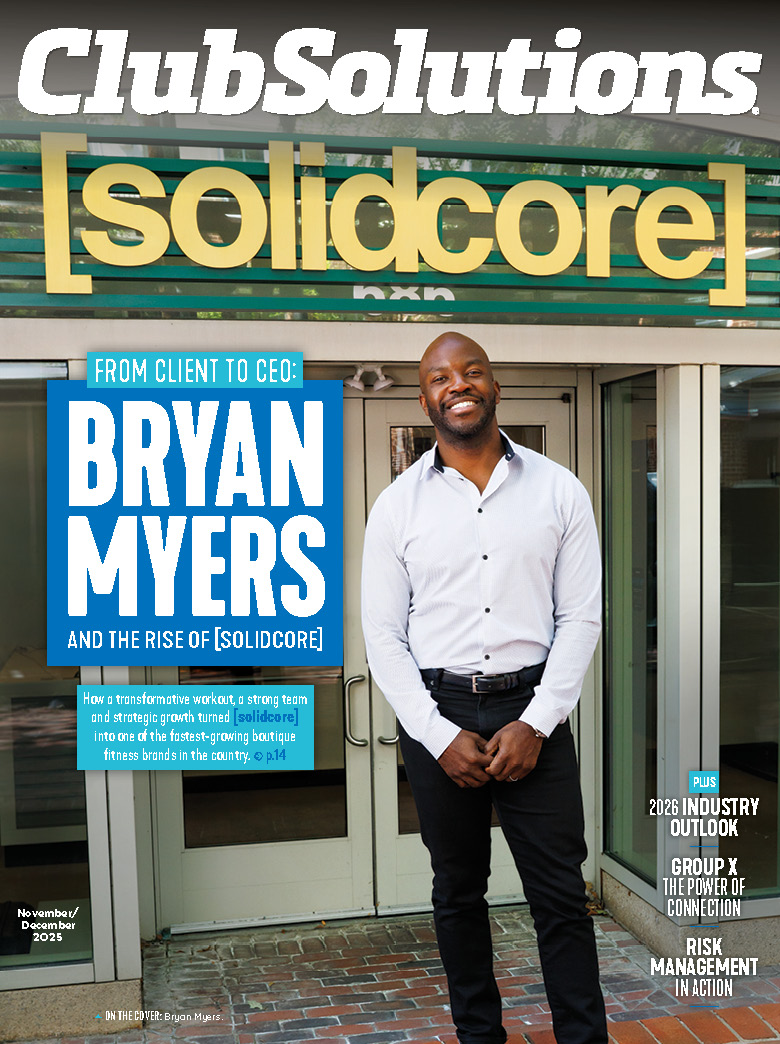A few years back I spent three weeks working with a small chain of personal training studios that specialized in developing athletes of all levels. The facilities were remarkable and dynamic, the trainers were top notch, and the owner had an incredible and inspiring story, as well as tons of social proof to support that they could deliver on their promise. However, by the time I got involved; they had shrunk from four facilities to three and were struggling to attract new business.
This downturn isn’t that uncommon in our industry. IHRSA reports a failure rate of 81 percent of new fitness studios. Generally, if a fitness professional is considering opening a studio, then they are likely a pretty solid practitioner. However, we all know running and managing your own business is an entirely different skill set. “If you build it they will come” rarely works in our ultra-competitive industry.
Back to the story. I spent the first week evaluating whether there was evident and tremendous value in the program. The program model blew me away with the execution on the program side. No doubt in my mind they were sitting on a gold mine. Marketing was on point as well, and traffic was coming through the doors. So the question became, why wasn’t it converting to new business? It turns out they didn’t fully know who they were selling to.
Predominantly these facilities trained high school athletes who were looking to play sports in college. I would estimate they made up 75 percent of the membership base with another 15 percent college athlete. Sprinkle in the occasional professional athlete who also created much excitement, and you have the gist of whom they were selling to. The challenge wasn’t that they didn’t get these athletes excited. The issue was they didn’t get mom and dad excited.
The lowest rate, if I recall, was around $100 per month with the average somewhere closer to $200. I don’t know where you live, but high schoolers and college students in my town cannot afford to pay that. That’s where the parents come in. For the most part, the model was to ask the parent to drop the athlete off at the desk, have the parent sign a waiver, and then ask them to come back and pick them up in about an hour. The lobby was small and relatively uncomfortable. Parents were discouraged from watching because it distracted the athletes. When mom or dad came back to pick up their student, they were given a price sheet and told something like, “Little Johnny has a heck of a lot of talent. I think we can help him get to the next level if you enroll in this $200-per-month membership tier.” Almost every single time, the parent would say, “Thank you. We will discuss it at home and get back to you.” Never to be seen again.
The business believed that the athlete was going to be the best advocate for getting them to enroll in their program. That’s not entirely wrong. However, when you are demonstrating to a talented young athlete how much better your training program is on that first day, essentially blowing them out of the water in the workout with intensity, that athlete then crawls into the car and feels like they were hit by a bus. Likely not your best advocate to the parents in regards to investing a few hundred bucks a month for that experience.
I have found that parents who have the resources to invest significantly in their children’s development oftentimes will. If a parent or guardian is bringing their young athlete to a specialized training program outside of what the school offers, they likely believe their kid has the talent to play at the next level. So it is incumbent upon the value-building process that the parent/guardian believes in what we were doing. Little Johnny just has to believe in the workout and the coaches. The parents have to believe in the solution.
So I asked them to retool their sales approach. This time, while Johnny was out on the floor with the trainer, we had one of our better value-building communicators tour the parents around and explain the difference our program makes in developing athletes. We relayed that after this first session we ask that they drop the athlete off as to not distract from the process and explained that they should expect their student-athlete to feel like a house was dropped on them for the first two weeks. We also went on to show dozens of success stories that had come through the program and that if the trainer found at the end of the sessions that little Johnny had the potential, there was no reason their kid couldn’t be our next success story.
There were a few other recommendations, of course, but this was by far the one I felt most important. Fast forward to today, and now that shrinking fitness business has 20 locations with plans to expand at an even higher rate.
Success isn’t a happy accident, and I find that generally the difference between success and failure lies in the small nuances of communication. Before we concede that 81 percent of new studios will continue to fail, let’s take a moment to evaluate and optimize our messaging. I bet we will all realize a lot more success if we do.
Jason R. Stowell is the division director of fitness and wellness for JCC of Greater Pittsburgh. He is an award-winning fitness leader with over 20 years of successful experience providing strategic planning, talent management, and expert-level sales training in the health and fitness industry. Connect with him on LinkedIn here.










